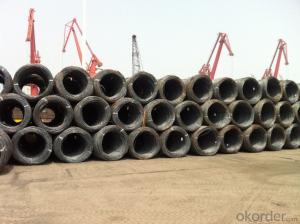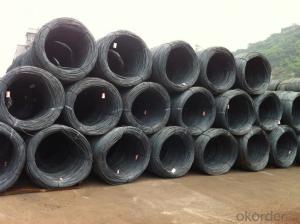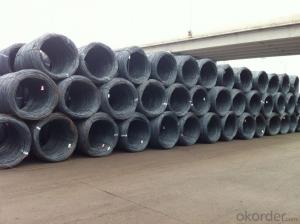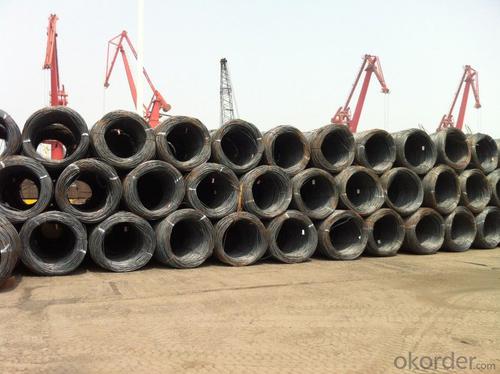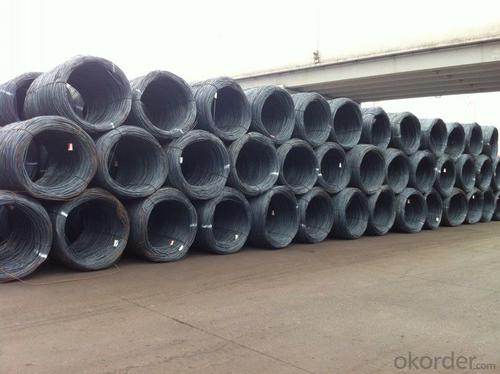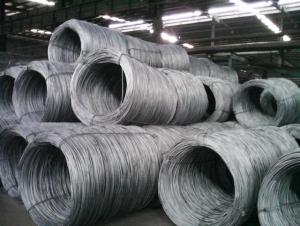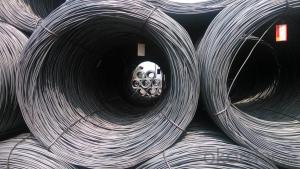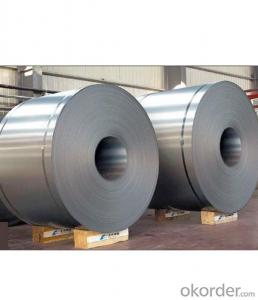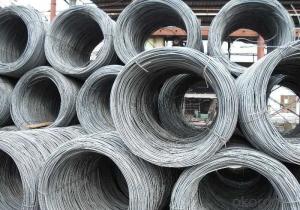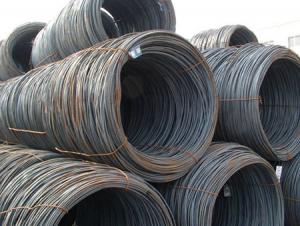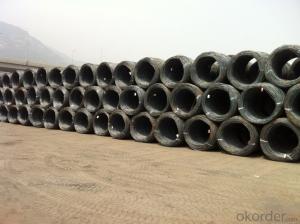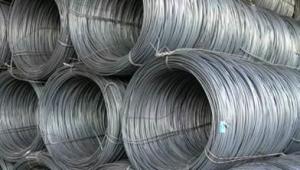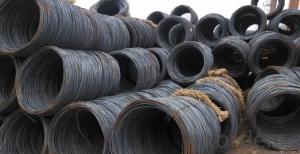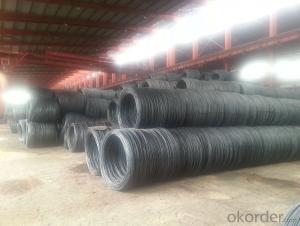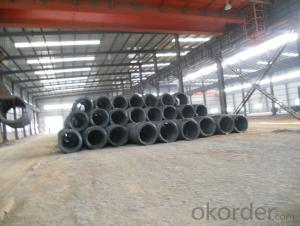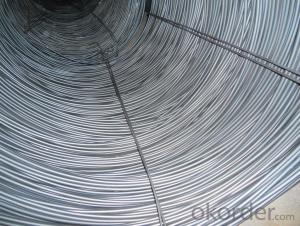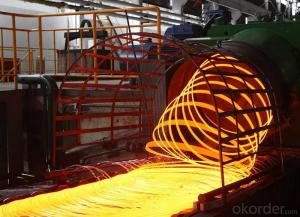SAE1008 Wire Rods Best Quality and Lowest Price
- Loading Port:
- Tianjin
- Payment Terms:
- TT OR LC
- Min Order Qty:
- 26 m.t.
- Supply Capability:
- 20000 m.t./month
OKorder Service Pledge
OKorder Financial Service
You Might Also Like
Specification
Grade: SAE1008 Standard: ASTM
Diameter: 5.5mm, 6.5mm, 7mm, 8mm, 9mm, 10mm, 11mm, 12mm
Alloy or Not: Alloy
Technique: Hot Rolled Place of Origin: China Mainland
Chemical Composition:
Please kindly find our chemistry of our material based on SAE1008 as below for your reference:
Grade | Chemical Composition (%) | |||||
C | Mn | S | P | Si | B | |
SAE1008 | 0.10max | 0.30-0.50 | 0.050max | 0.040max | 0.30max | 0.0008min |
Mechanical properties | ||||||
Yield strength(N/mm2) | Tensile strength(N/mm2) | Elongation (%) | ||||
≥195 | 350-380 | ≥32 | ||||
Usage and Applications of Wire Rod:
After hot-rolled the products shaped into coil and delivery as finished product, including round, square,rectangular, hexagonal and so on. Since most of the products are round, it is generally called wire rod. Carbon steel wire rod is widely used in construction and manufacturing. Carbon steel wire rod is mainly used for reinforcement of reinforced concrete and welded structure or reprocessed (roberts , nail, etc.) materials, especially used to produce wire drawing, welding electrode, nails, spring, electronic, precise machinery parts and so on.
Packaging & Delivery of Wire Rod:
Packaging Detail: products are packed in coil and then shipped by container or bulk vessel
Each coil weight: About 2.05MT
Delivery Detail: within 45 days after received deposit or LC.
Label: to be specified by customer, generally, each bundle has 1-2 labels
Trade terms: FOB, CFR, CIF
FAQ:
Q1: Why buy Materials & Equipment from OKorder.com?
A1: All products offered by OKorder.com are carefully selected from China's most reliable manufacturing enterprises. Through its ISO certifications, OKorder.com adheres to the highest standards and a commitment to supply chain safety and customer satisfaction.
A2: We have established an advanced quality management system which conducts strict quality tests at every step, from raw materials to the final product. At the same time, we provide extensive follow-up service assurances as required.
Q3: How soon we can delivery the goods ?
A3: We have a mill with 20000mts of capacity per month. We can delivery the goods within in one month ,as long as your order quantity less than 20000mts
Images of Wire Rod
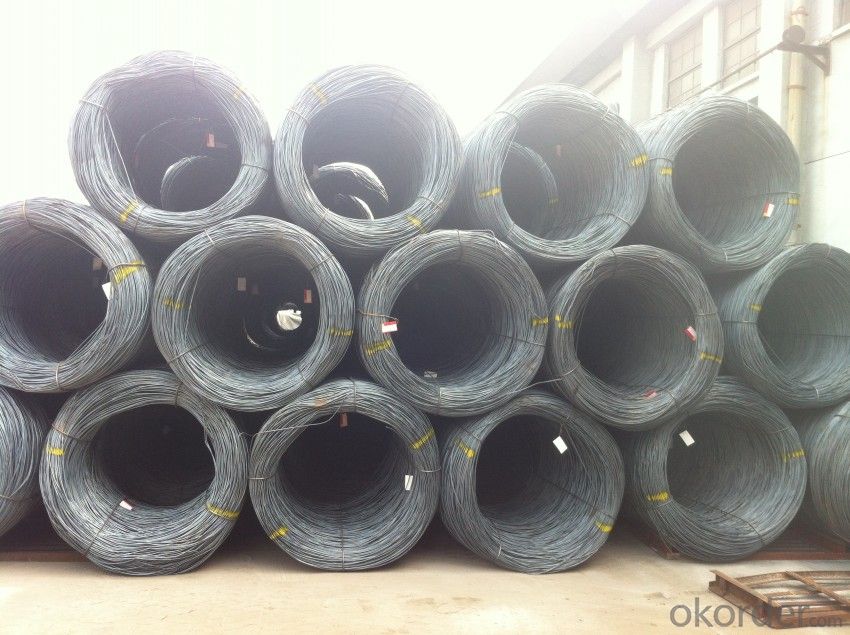
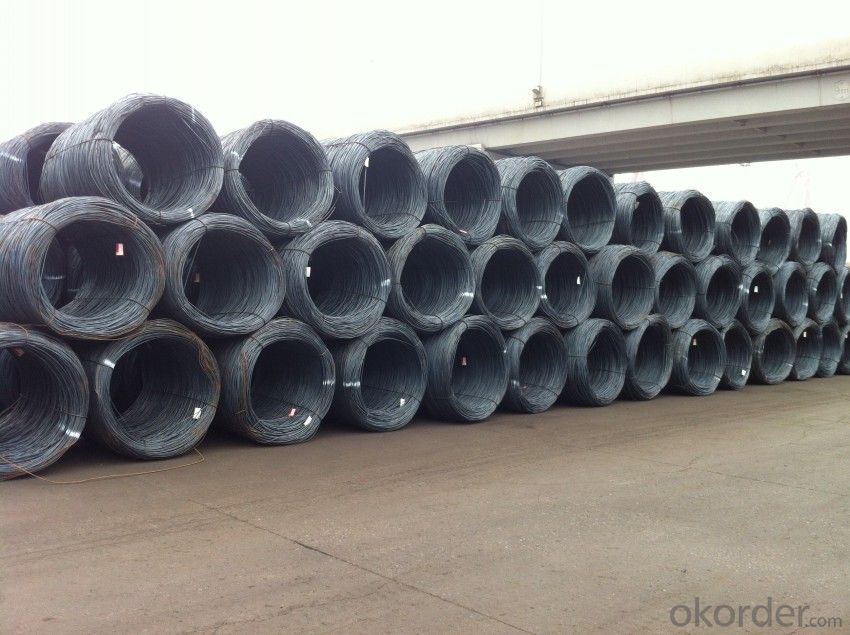
- Q: What are the specifications for steel wire rod?
- The specifications for steel wire rod can vary depending on the specific application and industry requirements. However, some common specifications include the diameter range, tensile strength, chemical composition, surface finish, and tolerance levels. These specifications ensure the desired strength, durability, and quality of the steel wire rod for its intended use in various industries such as construction, automotive, and manufacturing.
- Q: What are the common applications of high carbon steel wire rod?
- High carbon steel wire rod has a wide range of common applications due to its unique properties. One of the most common applications is in the manufacturing of springs, such as those used in automotive suspension systems or industrial machinery. The high carbon content of the wire rod provides excellent strength and durability, making it ideal for withstanding the constant stress and tension that springs experience. Another common application is in the production of wire ropes and cables. High carbon steel wire rod is preferred for this purpose due to its high tensile strength, which allows it to bear heavy loads and resist deformation. Wire ropes and cables made from high carbon steel wire rod are commonly used in construction, mining, and transportation industries. High carbon steel wire rod is also utilized in the manufacturing of piano wire. The high strength and excellent resilience of the wire make it perfect for producing piano strings that can withstand the tension and vibration necessary for producing the desired musical notes. Additionally, high carbon steel wire rod is often used in the production of wire mesh and wire fencing. Its strength and durability make it suitable for creating fences and enclosures that provide security and containment in various settings, such as residential, agricultural, and industrial. In summary, high carbon steel wire rod finds common applications in the production of springs, wire ropes and cables, piano wire, and wire mesh or fencing. Its unique properties make it a preferred choice for these applications, providing strength, durability, and the ability to withstand tension and stress.
- Q: What are the main factors influencing the choice of steel wire rod order invoicing process?
- The main factors influencing the choice of steel wire rod order invoicing process include the complexity of the order, the volume of orders, the frequency of invoicing, the preferences of the customers, the capabilities of the invoicing system, and any legal or regulatory requirements.
- Q: What are the different types of surface finishes available for steel wire rod?
- Some common types of surface finishes available for steel wire rod include black oxide, galvanized, phosphatized, and bright.
- Q: Can steel wire rod be used in the production of reinforcing bars?
- Steel wire rod has the ability to be utilized in the manufacturing of reinforcing bars, commonly referred to as rebar. These rebar are crucial for fortifying and reinforcing concrete structures, such as buildings, bridges, and highways. Steel wire rod serves as a raw material during the manufacturing process of rebar. Typically, this wire rod is composed of top-notch steel and is drawn into the desired thickness and shape to meet the specific requirements of reinforcing bars. By doing so, it furnishes the necessary strength and durability needed to enhance the structural integrity of concrete, thus preventing any potential cracking or failure. Consequently, steel wire rod stands as an essential element in the production of reinforcing bars.
- Q: What are the common applications of oil tempered steel wire rod?
- Oil tempered steel wire rod is a versatile material that finds numerous applications across various industries. Some of the common applications of oil tempered steel wire rod include: 1. Springs: Oil tempered steel wire rod is widely used in the manufacturing of springs, including automotive suspension springs, valve springs, and mechanical springs. Its high tensile strength, excellent fatigue resistance, and superior toughness make it an ideal material for these applications. 2. Cables and Wire Ropes: Oil tempered steel wire rod is used in the production of cables and wire ropes, which are extensively used in construction, mining, and transportation industries. Its high strength and flexibility make it suitable for heavy-duty lifting and pulling operations. 3. Automotive Industry: Oil tempered steel wire rod is utilized in various components of automobiles, such as seat frames, exhaust hangers, and brake springs. Its ability to withstand high temperatures and resistance to corrosion make it a preferred material in the automotive industry. 4. Construction Industry: Oil tempered steel wire rod is commonly used in the construction industry for applications like reinforcing concrete structures, manufacturing pre-stressed concrete products, and cable-stayed bridges. Its high tensile strength and durability ensure the integrity and longevity of the structures. 5. Furniture and Upholstery: Oil tempered steel wire rod is employed in the production of furniture and upholstery springs, providing comfort and support to sofas, chairs, and mattresses. Its ability to retain its shape and resistance to fatigue make it suitable for these applications. 6. Agricultural Equipment: Oil tempered steel wire rod is used in the manufacturing of various agricultural equipment, such as hay balers, fence wires, and vineyard trellising. Its strength, durability, and resistance to environmental factors make it ideal for these demanding applications. Overall, the common applications of oil tempered steel wire rod span a wide range of industries, thanks to its exceptional strength, durability, flexibility, and resistance to fatigue and corrosion. Its versatility and reliable performance make it a preferred choice for many critical applications.
- Q: What are the different types of steel wire rod coatings used for electrical conductivity?
- There are several different types of steel wire rod coatings used for electrical conductivity, each with its own unique characteristics and advantages. One common type of coating used for electrical conductivity is copper. Copper has excellent electrical conductivity properties, making it an ideal choice for applications requiring high electrical performance. Copper coatings can be applied through various methods such as electroplating or hot-dipping, ensuring a uniform and durable coating on the steel wire rod. Another type of coating used for electrical conductivity is silver. Silver is known for its exceptional electrical conductivity, even better than copper. It is often used in applications where the highest level of electrical performance is required, such as in high-frequency cables or precision electronic components. Silver coatings can be applied through electroplating or electroless plating processes, providing a thin and highly conductive layer on the steel wire rod. Zinc is another commonly used coating for electrical conductivity, although it may not possess the same level of conductivity as copper or silver. Zinc coatings are often used for corrosion protection in electrical applications, as they provide a sacrificial layer that prevents the underlying steel wire rod from corroding. Additionally, zinc coatings can also enhance the electrical conductivity of the steel wire rod to some extent. Tin coatings are also utilized for electrical conductivity purposes. Tin is known for its low electrical resistance and good corrosion resistance properties. Tin coatings can be applied through electroplating or hot-dipping processes, providing a reliable and conductive layer on the steel wire rod. Lastly, there are also specialized coatings such as nickel or gold that can be used for specific applications requiring unique electrical conductivity properties. Nickel coatings offer good electrical conductivity and corrosion resistance, making them suitable for various electrical and electronic applications. Gold coatings, on the other hand, are highly conductive and provide excellent corrosion resistance, making them ideal for high-end electronic components or connectors. In conclusion, the different types of steel wire rod coatings used for electrical conductivity include copper, silver, zinc, tin, nickel, and gold. Each coating offers specific advantages and is chosen based on the desired level of electrical performance, corrosion resistance, and application requirements.
- Q: How is steel wire rod used in the manufacturing of wire forms for roller coasters?
- Steel wire rod is used in the manufacturing of wire forms for roller coasters by being shaped and bent into various structures and designs that provide structural support and safety for the roller coaster track. The wire rod is typically used to create loops, twists, turns, and other intricate elements that make up the track layout. Its high strength and durability make it an ideal material choice for withstanding the extreme forces and stresses experienced during roller coaster rides.
- Q: How is steel wire rod tested for quality?
- Steel wire rod is tested for quality through a series of rigorous procedures to ensure its strength, durability, and adherence to industry standards. These tests typically include analyzing the chemical composition, conducting mechanical tests such as tensile strength and elongation measurements, inspecting the surface quality for any defects or imperfections, and verifying dimensional accuracy. Additionally, steel wire rod may also undergo tests for resistance to corrosion, heat treatment suitability, and adherence to specific international or customer-specific specifications. Overall, these comprehensive quality tests help ensure that only high-quality steel wire rods are released to the market.
- Q: What are the different types of surface defects in steel wire rod?
- There are several different types of surface defects that can occur in steel wire rods. Some of the most common types include: 1. Scale: Scale is a thin, flaky oxide layer that forms on the surface of the wire rod during the manufacturing process. It can be caused by the reaction of the steel with oxygen in the air or with other elements in the production environment. Scale can affect the appearance of the wire rod and also impact its mechanical properties. 2. Decarburization: Decarburization refers to the loss of carbon from the surface of the wire rod. It can occur during the heating or cooling process and is often caused by exposure to a reducing atmosphere. Decarburization can weaken the wire rod and reduce its hardness and strength. 3. Surface cracks: Surface cracks are small, visible fissures that can develop on the surface of the wire rod. They can be caused by a variety of factors, including improper handling, excessive cooling rates, or stress during the manufacturing process. Surface cracks can lead to mechanical failures and reduce the overall quality of the wire rod. 4. Pits and dents: Pits and dents are small depressions or irregularities that can occur on the surface of the wire rod. They can be caused by a variety of factors, including the presence of impurities, improper handling, or the use of worn or damaged equipment. Pits and dents can affect the appearance of the wire rod and also impact its mechanical properties. 5. Lamination: Lamination refers to the separation or splitting of the wire rod into layers or sheets. It can be caused by a variety of factors, including improper rolling or cooling processes, the presence of impurities, or excessive stress. Lamination can weaken the wire rod and reduce its strength and ductility. 6. Corrosion: Corrosion is the process of gradual deterioration of the wire rod due to chemical reactions with its surroundings. It can be caused by exposure to moisture, chemicals, or other corrosive substances. Corrosion can affect the appearance and mechanical properties of the wire rod and can lead to premature failure. Overall, these different types of surface defects in steel wire rods can have a significant impact on the quality and performance of the product. It is important for manufacturers to closely monitor and control the production process to minimize these defects and ensure the production of high-quality wire rods.
Send your message to us
SAE1008 Wire Rods Best Quality and Lowest Price
- Loading Port:
- Tianjin
- Payment Terms:
- TT OR LC
- Min Order Qty:
- 26 m.t.
- Supply Capability:
- 20000 m.t./month
OKorder Service Pledge
OKorder Financial Service
Similar products
Hot products
Hot Searches
Related keywords
